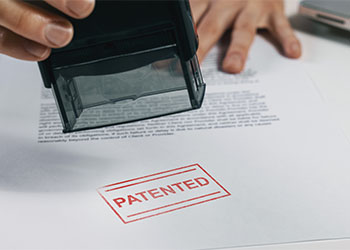What You Need to Know About Patent Drawings
May 18, 2023
 The Constitution of the United States specifically protects intellectual property with the clause: "To promote the Progress of Science and useful Arts, by securing for limited Times to Authors and Inventors the exclusive Right to their respective Writings and Discoveries."
The Constitution of the United States specifically protects intellectual property with the clause: "To promote the Progress of Science and useful Arts, by securing for limited Times to Authors and Inventors the exclusive Right to their respective Writings and Discoveries."
Accordingly, the United States Patent and Trademark Office (USPTO) was created by Congress and issued its first patent on July 31, 1790, to Samuel Hopkins of Vermont for a process to make potash, an ingredient in fertilizer. President George Washington himself signed the patent. To date, more than 11 million U.S. patents have been issued.
The first few steps of the patent process involve conducting research on existing patents to make sure that yours is unique and then filing your patent application and paying the filing fee. The next step is crucial and can take many months, and the USPTO refers to it as prosecution. Prosecution means an examiner will review what’s been submitted to determine if it meets the inventive requirements to be original and nonobvious.
When submitting a patent application, do you need to include a drawing? It depends. For a design patent, a drawing is a requirement. After all, a design patent is all about what the invention looks like. For a utility patent, drawings, flowcharts, pictures, and diagrams are often needed to explain and illustrate the claimed invention.
If you wish to protect your intellectual property with a patent and you’re located in the Kansas City, Missouri, area, contact me at the Law Office of Julie Scott LLC. I can help you every step of the way in seeking a patent, beginning with the research and submission of the application itself, including any necessary drawings or other illustrations to explain your submission. I also proudly serve clients in Columbia, Springfield, and Rolla, Missouri.
Why Include Patent Drawings?
The federal patent code, which explains how to implement U.S. patent laws, states in 35 USC 113 that “drawings must be furnished with the patent application where it is necessary to understand the invention sought to be patented.” For design patents, drawings are an absolute must. For utility patents, if you don’t include a drawing or other visual form of explanation, the patent examiner may have many questions that could have been answered by a drawing. In other words, it may be easier to get the patent that you want by including one or more drawings in your application.
Even for a process, it's a good idea to include a flowchart in your patent application. A general rule when it comes to drawings is that it’s better to include them than not. A patent application will never be rejected because it includes too many drawings, but it could be delayed or potentially rejected if a drawing or drawings would have made the application more easily understood.
When Are Patent Drawings Required?
As the language from the United States Code makes clear, drawings are required “when it is necessary to understand the invention.” For practical purposes, nearly every patent application should include a drawing of some type to visualize the invention. As a practical matter, if the patent examiner in the prosecution phase has questions because the written description in the application falls short of describing the invention or process, you may have to try to submit a drawing and declaration during examination. These may or may not be accepted.
Another practical aspect is that should someone else submit a patent application similar to yours with a drawing while you did not choose to include one, that person or entity may obtain the patent, prevailing over your application. Also, drawings can be quite useful after you obtain your patent in an instance where someone infringes on your patent. A jury will have a much easier time assessing what’s at stake if they can see a drawing or other artwork defining your invention, process, or design.
What Is Required for Patent Drawings?
The USPTO has specific rules for patent drawings as described in its “Manual of Patent Examining Procedures.” These rules include but are not limited to:
illustrating in black and white unless color is the only way to show the invention,
maintaining margins of 1 inch on the top and left side, 3/8 inch on the right, and 5/8 inch on the bottom,
avoiding erasures, alterations, overwriting, and interlineations,
using solid lines to identify the claimed invention, and broken lines or shading to identify what is not part of the claimed invention but is needed to put the invention in context so that it can be better understood, and
if a photograph is submitted then care must be taken to follow these and other rules that apply to drawings.
Work With an Experienced Patent Attorney
As you can see, the patent process can be challenging and complicated. If your submitted drawing, illustration, or photograph doesn’t meet standards, that can only delay the process. Meanwhile, someone else may swoop in and obtain the patent you’re seeking. A skilled and experienced patent attorney can help you avoid such a fate.
If you’re located in the Kansas City, Missouri area or in nearby communities, reach out to me at the Law Office of Julie Scott LLC with all your patent and intellectual property right issues and concerns. I have been helping others like you navigate the system for more than 15 years and will be happy to help you.
